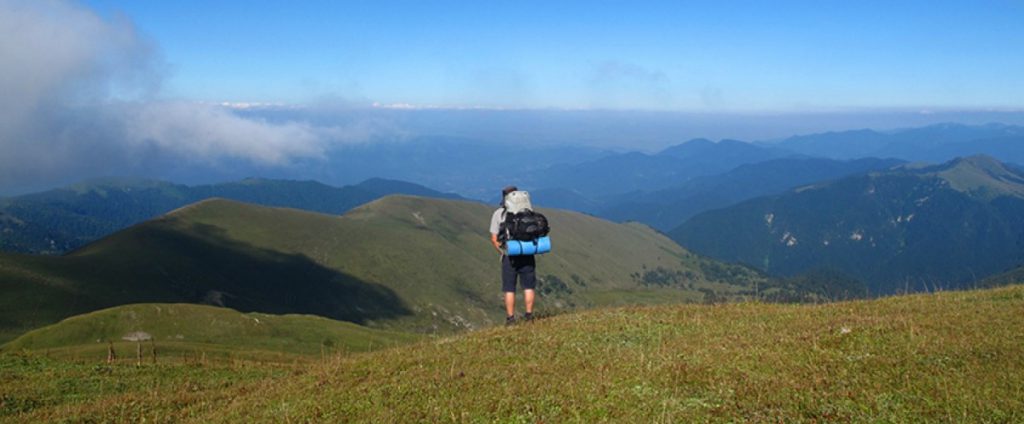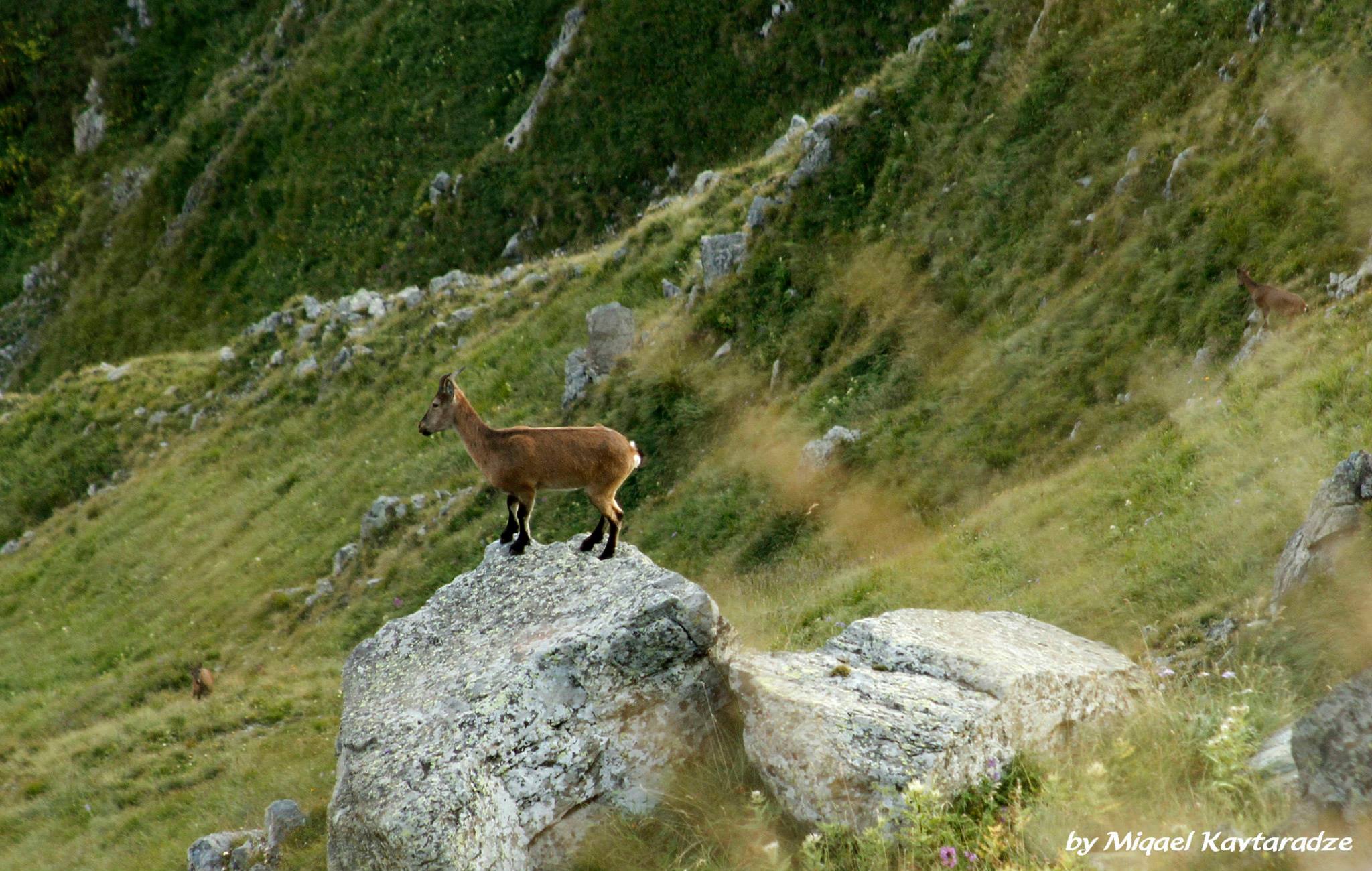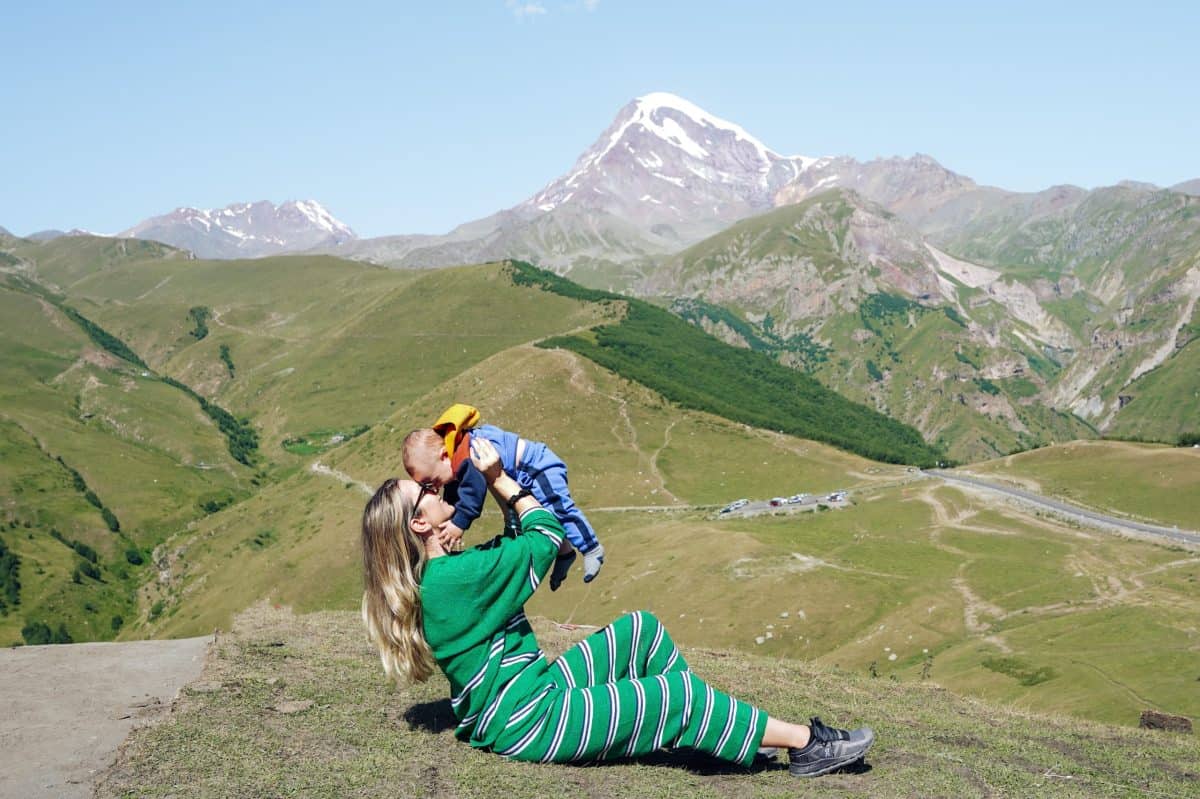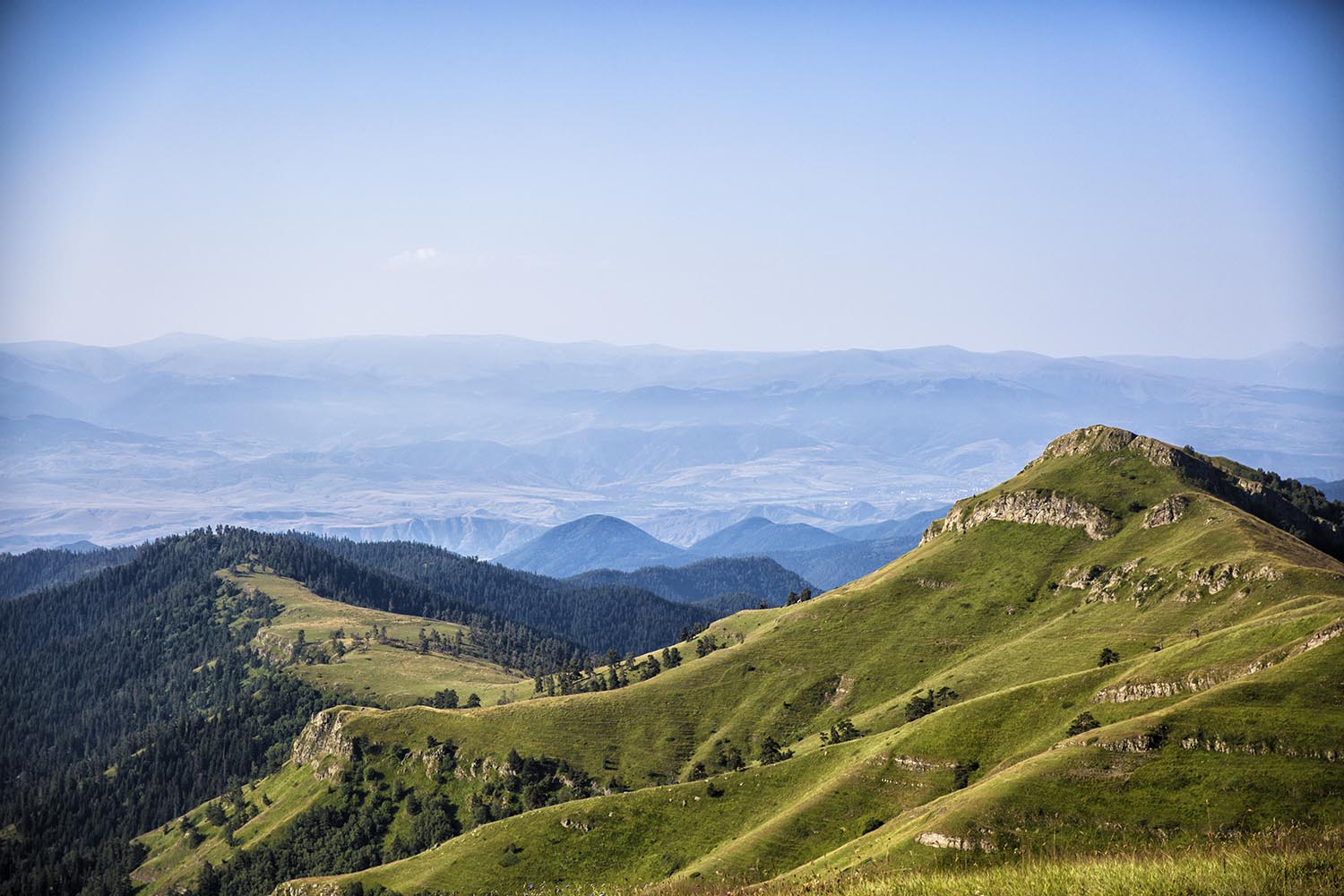Georgia, a jewel nestled at the crossroads of Europe and Asia, is renowned for its diverse landscapes, ranging from soaring Caucasus Mountains and lush forests to serene lakes and pristine coastlines. The country’s national parks are a testament to its natural splendor, offering abundant opportunities for nature enthusiasts, wildlife lovers, and avid hikers. Whether you seek challenging mountain treks, tranquil nature walks, or encounters with unique wildlife, Georgia’s national parks provide unforgettable experiences. This guide explores Georgia’s top national parks, highlighting their natural beauty, wildlife, hiking trails, and essential visitor tips.
1. Borjomi-Kharagauli National Park
Borjomi-Kharagauli National Park is one of Europe’s largest and most diverse national parks, covering approximately 84,000 hectares in central Georgia. Established in 1965, it showcases a stunning array of ecosystems, from dense forests and alpine meadows to picturesque rivers and waterfalls. The park is easily accessible from Tbilisi, making it a popular destination for both locals and international travelers.

Key Features
- Diverse Landscapes: Encompasses mountains, valleys, rivers, and rich flora and fauna.
- Borjomi Mineral Waters: Famous for its healing mineral springs, with the Borjomi Central Park offering the original mineral springs.
- Historical Sites: Includes remnants of ancient settlements and historical landmarks.
Wildlife
- Mammals: Brown bears, wolves, lynxes, chamois, and roe deer.
- Birds: Golden eagles, black woodpeckers, and various songbirds.
- Flora: Over 2,500 plant species, including rare and endemic varieties.
Hiking and Activities
- Popular Trails:
- Saruni Valley: Gentle trails are ideal for families and beginners, featuring scenic landscapes and picnic spots.
- Mukhera Waterfall: A moderate hike leading to a beautiful waterfall.
- Gergeti Glacier Trail: For more experienced hikers, offering breathtaking views of glaciers and the surrounding mountains.
- Other Activities: Horseback riding, birdwatching, cycling, and camping.
Best Time to Visit
- Spring (April to June): Blooming flora and mild weather.
- Autumn (September to November): Vibrant fall colors and comfortable temperatures.
- Summer (July to August): Ideal for hiking and outdoor activities, though some trails can be crowded.
Visitor Tips
- Permits: No special permits are required for day hikes, but overnight camping may require registration.
- Accommodation: Options range from guesthouses and eco-lodges to campsites within the park.
- Transportation: Accessible by car from Tbilisi; public transport options include marshrutkas (minibusses) to Borjomi town.
2. Tusheti National Park
Tusheti National Park, located in northeastern Georgia, is a remote and pristine region known for its rugged beauty and well-preserved cultural heritage. Encompassing the Tusheti region, the park is characterized by dramatic mountain landscapes, deep gorges, alpine meadows, and ancient stone villages. Accessible only via the scenic Georgian Military Highway, Tusheti offers an authentic and tranquil escape from the hustle and bustle of city life.
.jpg)
Key Features
- Stunning Scenery: Towering peaks, glacial lakes, and lush valleys.
- Cultural Heritage: Traditional Tushetian villages with unique Svanetian towers and ancient churches.
- Biodiversity: Rich ecosystems supporting a variety of plant and animal species.
Wildlife
- Mammals: Brown bears, wolves, and the elusive Caucasian tur.
- Birds: Bearded vultures, golden eagles, and various waterfowl.
- Flora: Alpine flowers, juniper forests, and rare medicinal plants.
.jpeg)
Hiking and Activities
- Popular Trails:
- Omalo to Shatili Trek: A challenging multi-day hike connecting two remote villages, passing through breathtaking landscapes.
- Dartlo to Parsma: A day hike through pristine valleys and traditional villages.
- Truso Valley: Offers serene hikes with opportunities to explore hot springs and mineral waters.
- Other Activities: Horseback riding, fishing, and cultural tours of traditional villages.
Best Time to Visit
- Late Spring to Early Autumn (June to September): Accessible weather and fully open trails. Note that some routes may still be inaccessible in early spring or late autumn due to snow.
Visitor Tips
- Permits: Required to enter Tusheti; obtain a permit through your hotel or a local tour operator in Tbilisi.
- Accommodation: Limited to traditional guesthouses and homestays in villages like Omalo and Diklo.
- Transportation: Best accessed by 4×4 vehicles due to rugged and often unpaved roads. Organized tours can simplify the journey.
3. Lagodekhi National Park
Located in the eastern part of Georgia, Lagodekhi National Park spans over 35,000 hectares along the eastern slopes of the Greater Caucasus Mountain Range. Renowned for its rich biodiversity and stunning natural landscapes, the park offers a perfect blend of lush forests, alpine meadows, and glacial lakes. It is particularly celebrated for its well-marked hiking trails and opportunities for wildlife observation.

Key Features
- Diverse Ecosystems: From subtropical forests to alpine environments.
- Waterfalls and Rivers: Features several picturesque waterfalls and the Lagodekhi River.
- Cultural Sites: Includes ancient monasteries and traditional villages.
Wildlife
- Mammals: Brown bears, Caucasian lynxes, and otters.
- Birds: Capercaillies, eagles, and various forest birds.
- Flora: Over 2,000 plant species, including rare orchids and endemic flora.

Hiking and Activities
- Popular Trails:
- Mtkvari Gorge: An easy hike along the Lagodekhi River, suitable for families.
- Markalistskali Waterfall Trail: A moderate hike leading to a stunning waterfall.
- Mta Lake: A more challenging trek to a serene alpine lake surrounded by breathtaking scenery.
- Other Activities: Birdwatching, nature photography, and educational tours on the park’s biodiversity.
Best Time to Visit
- Spring to Autumn (May to October): Ideal for hiking and enjoying the park’s natural beauty. Summer offers lush greenery, while autumn showcases vibrant foliage.
Visitor Tips
- Accommodation: Guesthouses and eco-lodges are available in nearby villages such as Lagodekhi and Variani.
- Guided Tours: Highly recommended for exploring deeper into the park and spotting elusive wildlife.
- Transportation: Accessible by car from Tbilisi (approximately 3 hours) or by public transport to Lagodekhi town followed by local taxis.
4. Kazbegi (Stepantsminda) National Park
Kazbegi National Park, also known as Stepantsminda, is situated in northern Georgia, encompassing the iconic Mount Kazbek and the stunning Gergeti Trinity Church. The park is a paradise for mountaineers, hikers, and nature lovers, offering some of the most dramatic and picturesque landscapes in the Caucasus region.

Key Features
- Mount Kazbek: One of the highest peaks in the Caucasus, attracting climbers and trekkers.
- Gergeti Trinity Church: A beautiful church perched on a hill with panoramic views of the surrounding mountains.
- Breathtaking Vistas: Stunning views of glaciers, alpine meadows, and rugged mountain terrain.
Wildlife
- Mammals: West Caucasian tur, chamois, and snow leopards (rare).
- Birds: Lammergeiers, golden eagles, and alpine accentors.
- Flora: High-altitude plants, wildflowers, and unique alpine vegetation.
Hiking and Activities
- Popular Trails:
- Gergeti Trinity Church Trail: A moderate hike leading to the iconic church, offering stunning views of Mount Kazbek.
- Shatili Trail: A challenging trek connecting Gergeti with the ancient village of Shatili.
- Truso Valley: Known for its beautiful trails, hot springs, and remote villages.
- Other Activities: Mountaineering, paragliding, and exploring local Svanetian culture.
Best Time to Visit
- Summer (June to September): Optimal for hiking and mountaineering, with clear skies and milder temperatures.
- Winter (December to March): Ideal for skiing and snowboarding, though some trails may be inaccessible due to snow.
Visitor Tips
- Accommodation: Numerous guesthouses and hotels are available in Stepantsminda, offering various levels of comfort and pricing.
- Transportation: Easily accessible by car or marshrutka (minibus) from Tbilisi. Hiring a 4×4 vehicle is recommended for a more comfortable journey.
- Guides: Consider hiring a local guide for mountain treks and to learn more about the region’s natural and cultural history.
5. Samegrelo-Zemo Svaneti National Park
Samegrelo-Zemo Svaneti National Park is a vast protected area encompassing the regions of Samegrelo and Zemo Svaneti in western and northwestern Georgia. The park is celebrated for its rich biodiversity, diverse ecosystems, and a harmonious blend of cultural and natural attractions. It offers a variety of landscapes, including dense forests, rugged mountains, deep gorges, and serene lakes.
.jpg)
Key Features
- Diverse Landscapes: Combines mountainous regions with lush lowland areas.
- Historical Sites: Home to ancient monasteries, churches, and traditional villages.
- Biodiversity: Supports a wide range of flora and fauna, including several endemic species.
Wildlife
- Mammals: Brown bears, wolves, and Caucasian tur.
- Birds: Bearded vultures, black woodpeckers, and diverse songbirds.
- Flora: Over 3,000 plant species, including rare and medicinal plants.
Hiking and Activities
- Popular Trails:
- Khareba Gorge: A scenic trail offering views of waterfalls, rivers, and lush forests.
- Martvili Canyon: Explore the stunning limestone canyons and enjoy a boat ride through the crystal-clear waters.
- Shatskhi Lakes: Moderate hikes leading to beautiful alpine lakes surrounded by pristine nature.
- Other Activities: Wildlife watching, photography, and visiting cultural landmarks such as the Nokalakevi archaeological site.
Best Time to Visit
- Spring (April to June) and Autumn (September to November): Ideal for hiking and exploring, with pleasant weather and vibrant natural colors.
- Summer (July to August): Great for outdoor activities, though some areas may be crowded.
- Winter (December to February): Limited accessibility, best for those seeking solitude and winter landscapes.
Visitor Tips
- Accommodation: Stay in nearby towns like Zugdidi or Mestia, offering a range of guesthouses and hotels.
- Transportation: Best accessed by car; public transport options may be limited in remote areas.
- Guided Tours: Recommended for exploring deeper trails and understanding the park’s ecological and cultural significance.
6. Borjomi Valley National Park
Borjomi Valley National Park, part of the larger Borjomi-Kharagauli National Park, is renowned for its stunning mineral springs, lush forests, and scenic landscapes. Located in the heart of Georgia, it is famous for the Borjomi mineral water, which has been cherished for its healing properties since ancient times.

Key Features
- Mineral Springs: The Borjomi Central Park houses the original Borjomi springs, offering both historical significance and health benefits.
- Scenic Beauty: Rolling hills, dense forests, and picturesque rivers make it an ideal destination for nature lovers.
- Recreational Facilities: Well-maintained parks, picnic areas, and walking paths for leisurely exploration.
Wildlife
- Mammals: Roe deer, foxes, and various small mammals.
- Birds: Woodpeckers, thrushes, and other forest birds.
- Flora: Diverse plant life, including tall oaks, pines, and endemic species.
Hiking and Activities
- Popular Trails:
- Borjomi Central Park Walk: An easy walk around the park to enjoy the mineral springs and lush surroundings.
- Mukhera Waterfall Trail: A moderate hike leading to a beautiful waterfall, perfect for photography and picnicking.
- Forest Trails: Numerous trails winding through dense forests, ideal for nature walks and birdwatching.
- Other Activities: Horseback riding, cycling, and enjoying the park’s recreational facilities.
Best Time to Visit
- Spring (April to June) and Autumn (September to November): Perfect for hiking and enjoying the park’s natural beauty.
- Summer (July to August): Great for picnics and outdoor activities, though it can be warmer.
- Winter (December to February): Serene and snowy landscapes, are ideal for those seeking tranquility and winter scenery.
Visitor Tips
- Accommodation: Stay in Borjomi town, which offers a range of hotels, guesthouses, and resorts catering to different budgets.
- Transportation: Easily accessible by car or train from Tbilisi. Public transport options within the park are limited.
- Health Benefits: Take advantage of the mineral springs for a relaxing and health-boosting experience.
7. Practical Tips for Visiting Georgia’s National Parks
a. Planning and Permits
- Research Ahead: Familiarize yourself with each park’s highlights, trails, and regulations.
- Permits: Some parks may require entry permits or have restricted areas. Check official park websites or contact local authorities for the latest information.
b. Packing Essentials
- Clothing: Dress in layers to accommodate varying weather conditions. Waterproof jackets and sturdy hiking boots are essential.
- Gear: Bring a reliable backpack, water bottles, a first-aid kit, maps, and a camera to capture the stunning landscapes.
- Supplies: Carry snacks, extra water, and any necessary medications, especially when hiking in remote areas.
c. Safety Considerations
- Stay on Marked Trails: To protect the environment and ensure your safety, always follow designated paths.
- Weather Awareness: Check weather forecasts before heading out and be prepared for sudden changes, especially in mountainous regions.
- Local Guides: Hiring a local guide can enhance your experience, providing valuable insights and ensuring safe navigation through challenging terrains.
d. Sustainable Tourism
- Leave No Trace: Respect the natural environment by disposing of waste properly and minimizing your impact on the ecosystem.
- Respect Wildlife: Observe animals from a safe distance and avoid disturbing their natural behaviors.
- Cultural Respect: Honor local traditions and customs, particularly when visiting culturally significant sites within the parks.
Conclusion
Georgia’s national parks are a true reflection of the country’s unparalleled natural beauty and rich biodiversity. From the expansive Borjomi-Kharagauli National Park with its diverse ecosystems to the remote and enchanting Tusheti National Park, each protected area offers unique experiences for every type of traveler. Whether you’re seeking thrilling hikes, serene nature walks, or encounters with rare wildlife, Georgia’s national parks provide a perfect backdrop for unforgettable adventures. By planning thoughtfully, respecting the environment, and embracing the local culture, you can explore Georgia’s natural wonders in a sustainable and enriching way.
Start your Georgian adventure and discover the majestic landscapes and vibrant wildlife that make the country a top destination for nature lovers and adventure seekers alike!
